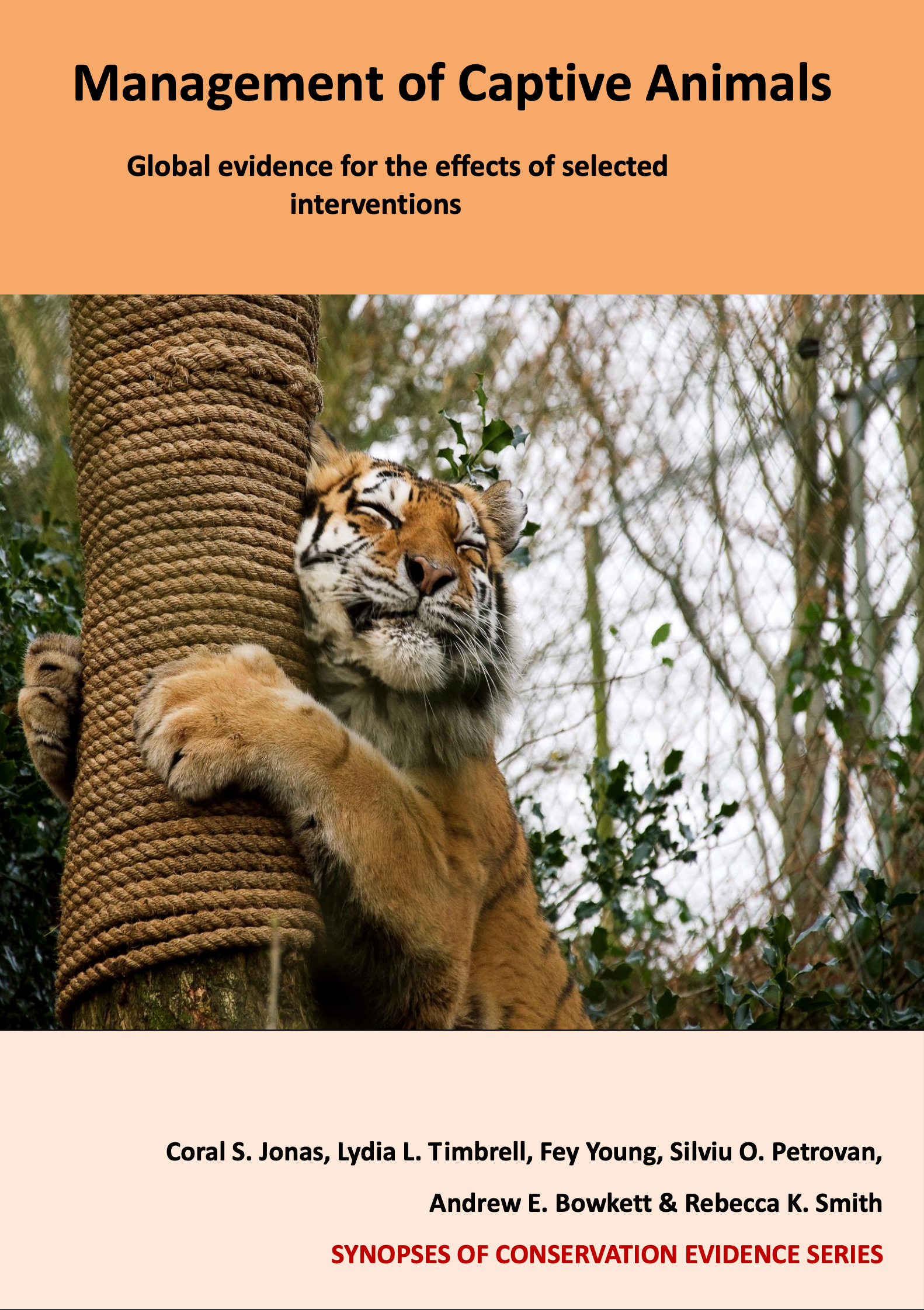Carnivores: Scatter food around enclosure
-
Overall effectiveness category Unknown effectiveness (limited evidence)
-
Number of studies: 2
View assessment score
Hide assessment score
How is the evidence assessed?
-
Effectiveness
70% -
Certainty
30% -
Harms
0%
Study locations
Supporting evidence from individual studies
A replicated, before-and-after study in 2003 of maned wolves Chrysocyon brachyurus in three zoos in Brazil found that scattering food throughout the enclosure increased locomotory behaviour in the observation period immediately following feeding compared to food provided on trays (mean values not reported). There were also significant individual differences between scattered food and food on trays in foraging, aggression, resting and ‘out of view’. However, these differences were not consistent for all wolves. There was no difference in faecal glucocorticoid metabolites or pacing between feeding conditions. Eleven maned wolves were housed in pairs except for one individual. The wolves were fed once daily with mixed fruit and mixed meat. In the baseline condition food was placed in trays whereas in the scattered food condition half the regular diet was provided on a tray and the rest hidden in 12 locations. Instantaneous focal sampling every 30 seconds was used for 20-minutes per individual for five periods per day.
Study and other actions testedA replicated study in 2012 of maned wolves Chrysocyon brachyurus in a zoo in Brazil found that when given a choice, the wolves spent more time in the section of their enclosure with scattered food compared to the section with food on a tray (mean values not reported). There was no difference between the number of times the wolves chose to enter the scattered or tray section at the start of each session. There were no differences in intake between scattered and tray sections between pairs or throughout the months. Prior to the study, eight maned wolves housed in mixed sex pairs were fed mixed fruit and mixed meats once a day. Sixteen 30-minute videotaped sessions were conducted over four months. The enclosures comprised of a starting compartment, a choice area and a scattered and tray section. Tray and scattered food conditions were alternated on each side of the enclosure. The section chosen at the beginning, the time spent in each area, the number of shifts between sections and the intake of both animals were all recorded.
Study and other actions tested
Where has this evidence come from?
List of journals searched by synopsis
All the journals searched for all synopses
This Action forms part of the Action Synopsis:
Management of Captive Animals
Management of Captive Animals - Published 2018
Captive Animal Synopsis





)_2023.JPG)














